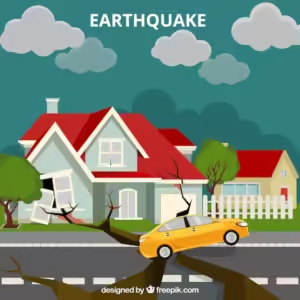Unveiling the forces beneath the Earth’s surface and their impact on our world.
Understanding Earthquakes
The Science of Earthquakes: Causes and Effects! Earthquakes happen when the tectonic plates that make up the Earth’s crust move against each other. These plates can push together, pull apart, or slide under one another. When the pressure builds up too much, it releases energy, causing the ground to shake. This energy travels in the form of seismic waves, which can cause destruction, particularly near the epicenter. The magnitude of an earthquake determines its impact, with larger quakes often leading to more severe damage. Understanding plate movement helps predict and mitigate earthquake effects.

How Earthquakes Affect Us: The Science of Earthquakes: Causes and Effects!
Earthquakes can have several impacts, including:
- Ground Shaking: This can damage buildings and roads.
- Surface Cracks: Earthquakes can create visible cracks in the ground.
- Tsunamis: Underwater earthquakes can generate huge waves called tsunamis.
- Landslides: They can trigger landslides on hills and mountains.
- Aftershocks: These are smaller shakes that occur after the main earthquake.
In Conclusion: The Science of Earthquakes: Causes and Effects!
While earthquakes can be unpredictable, we now know more about them thanks to advances in science and technology. Scientists use seismographs and advanced modeling techniques to detect early signs of earthquakes and understand their patterns. The more you understand about earthquakes, the better prepared you’ll be, which can help reduce their impact. By learning safety protocols, having an emergency kit, and knowing evacuation routes, you can minimize risk and stay safer during seismic events. Awareness and preparedness are key to protecting yourself and your loved ones in the event of an earthquake.









